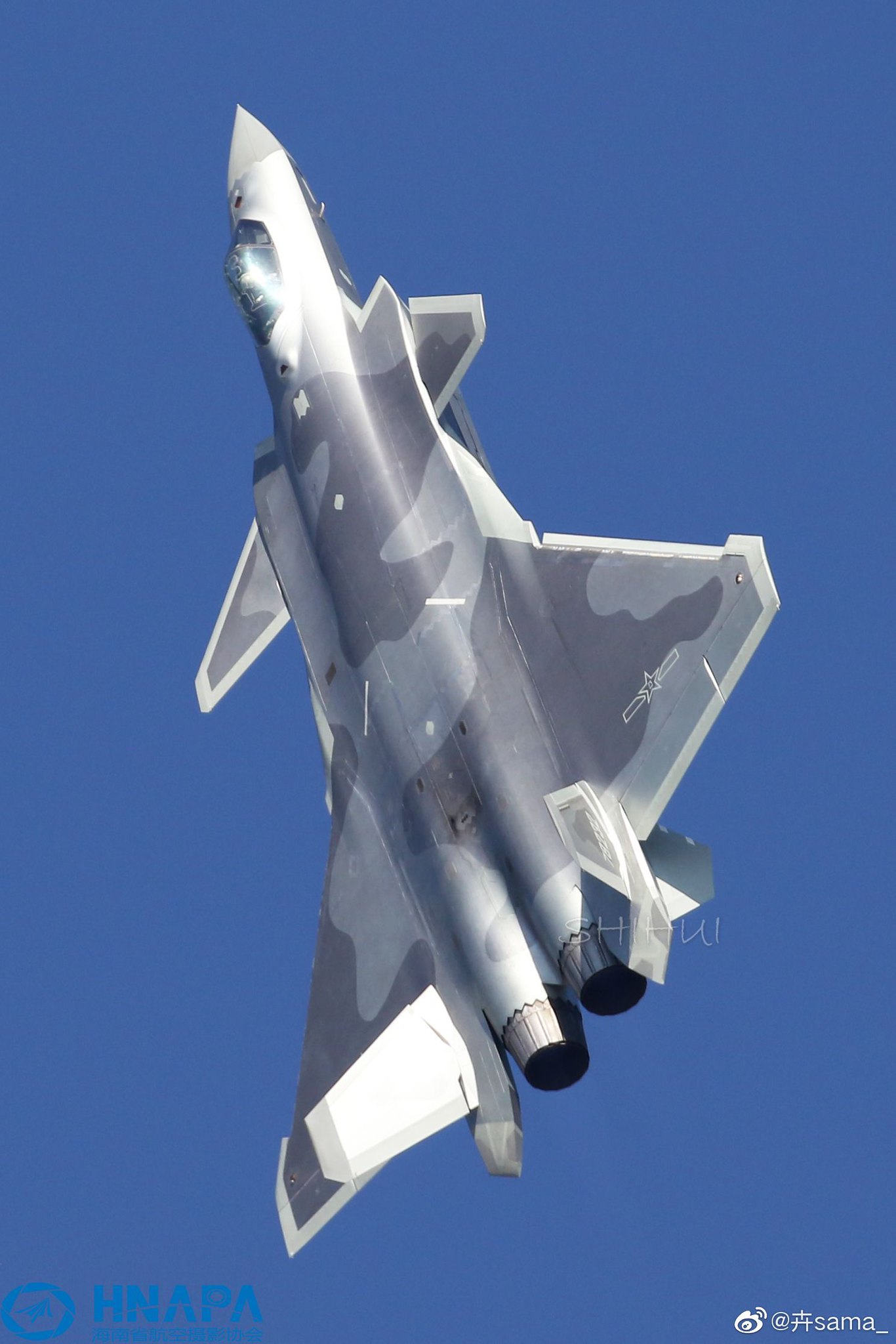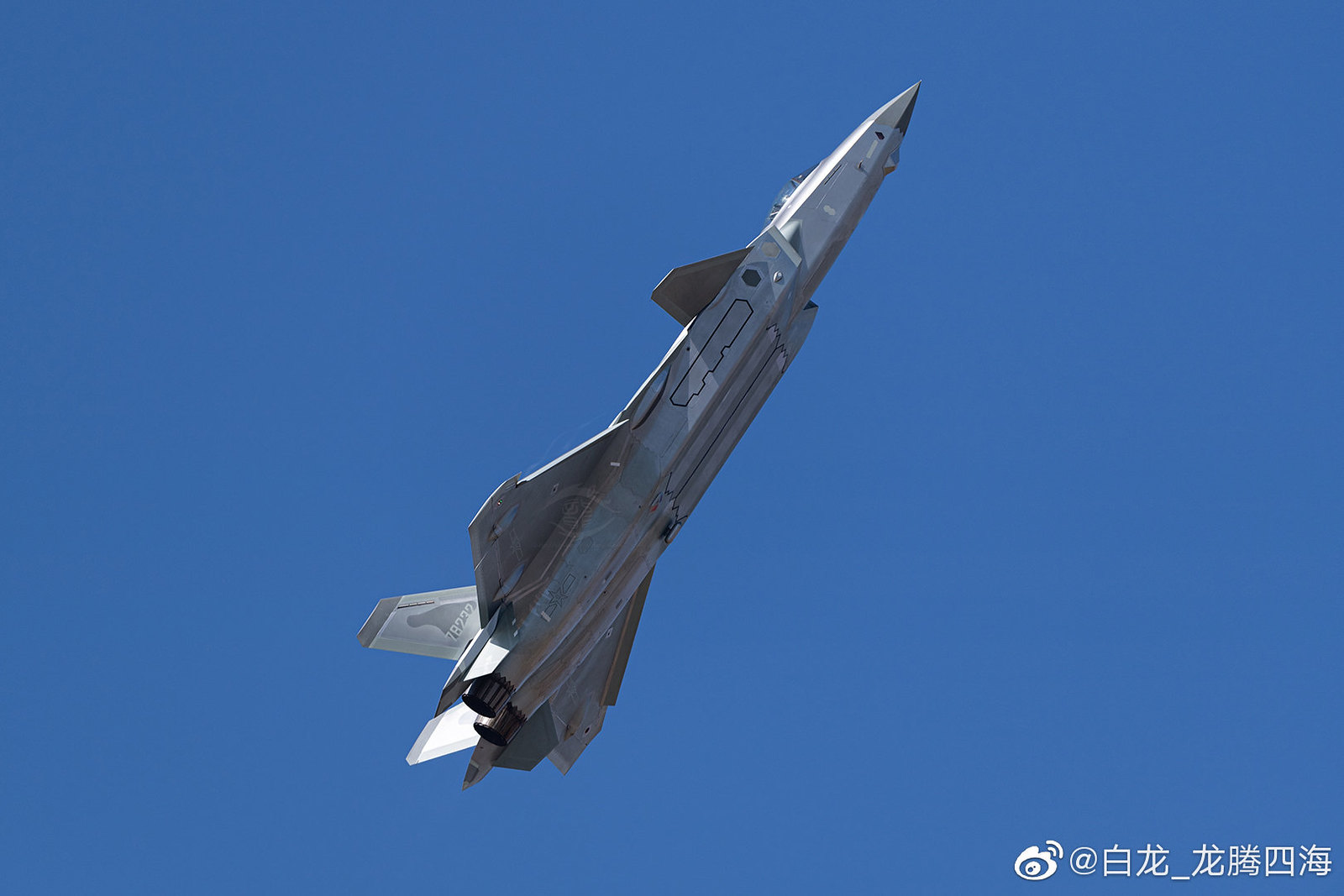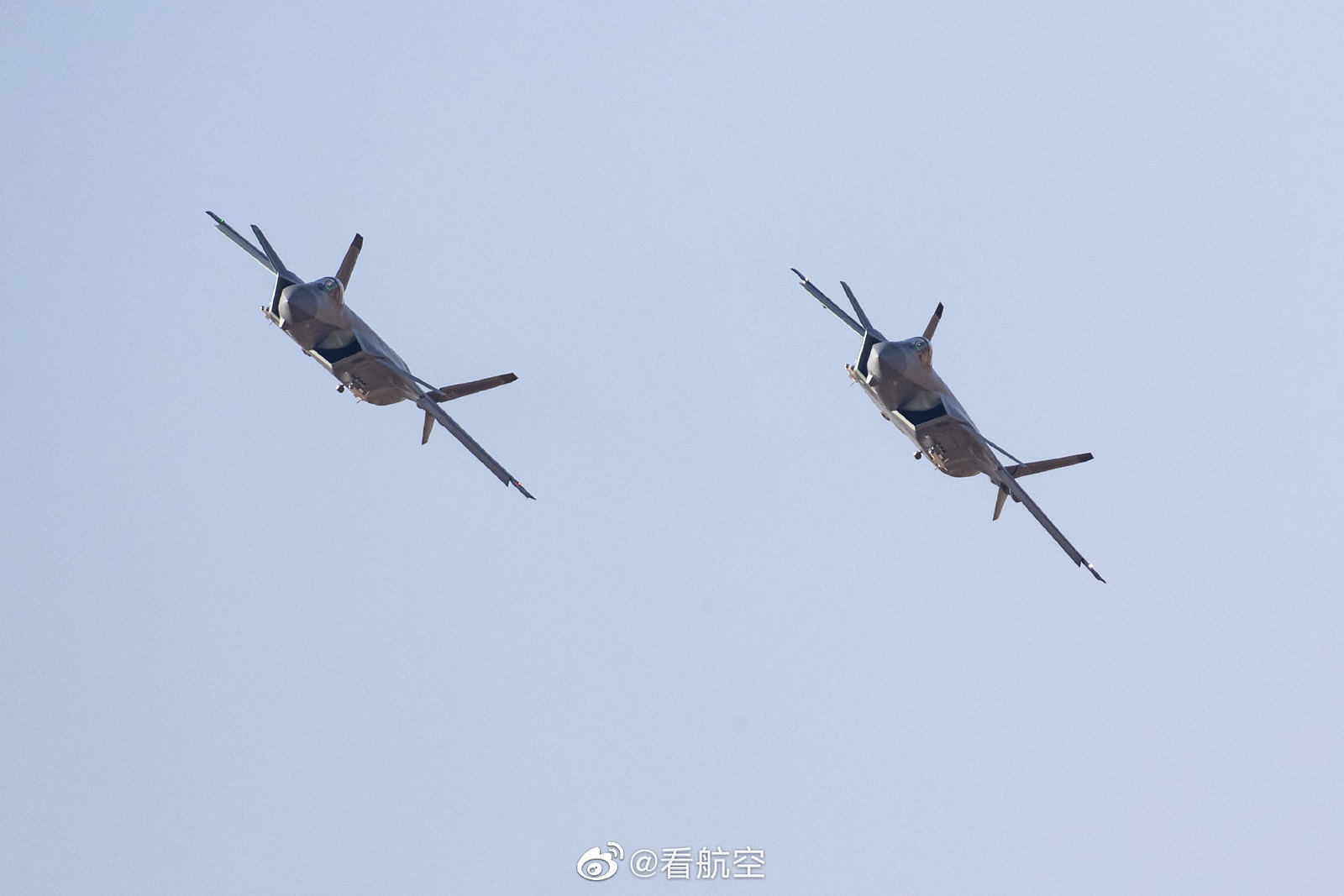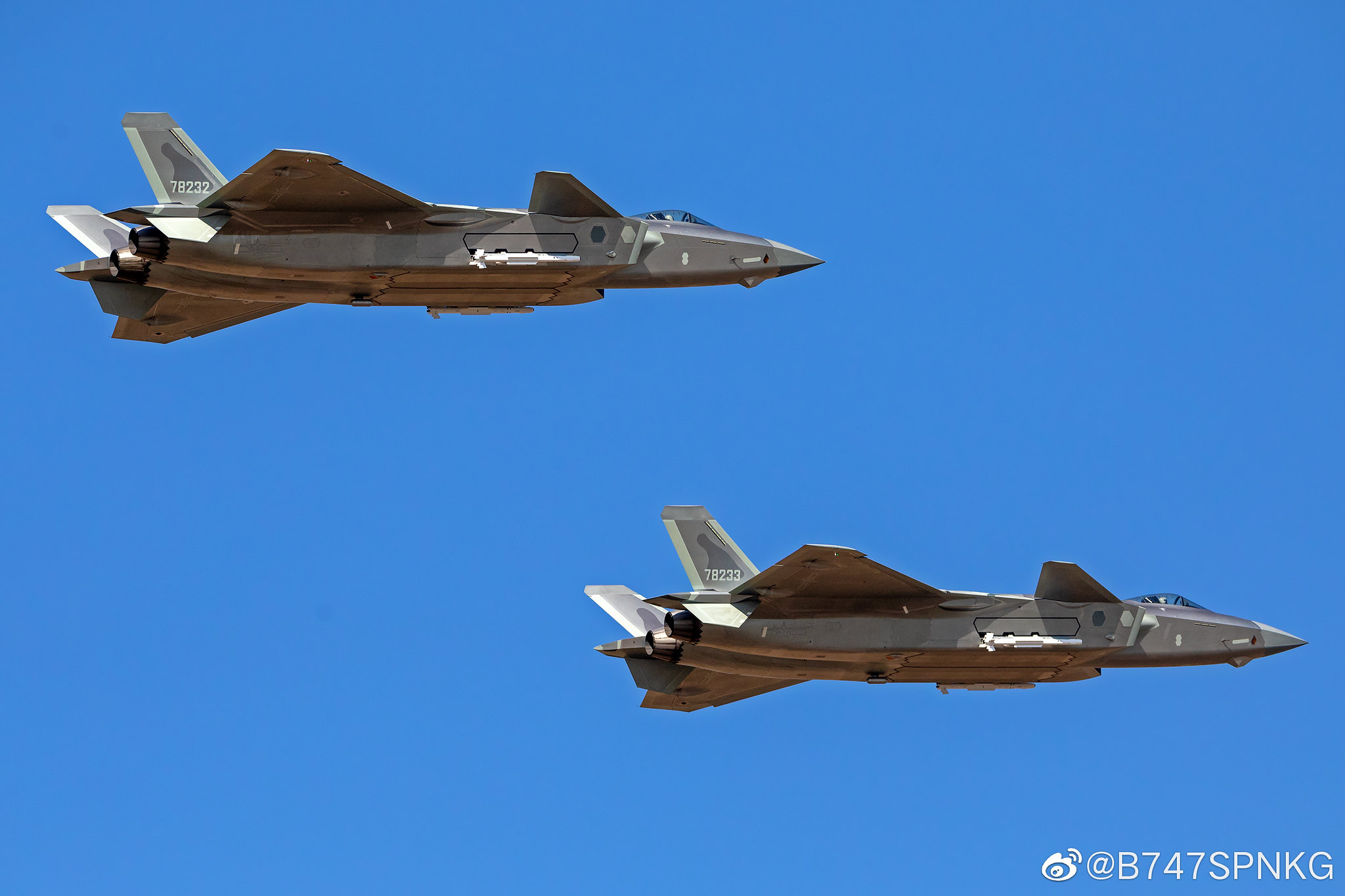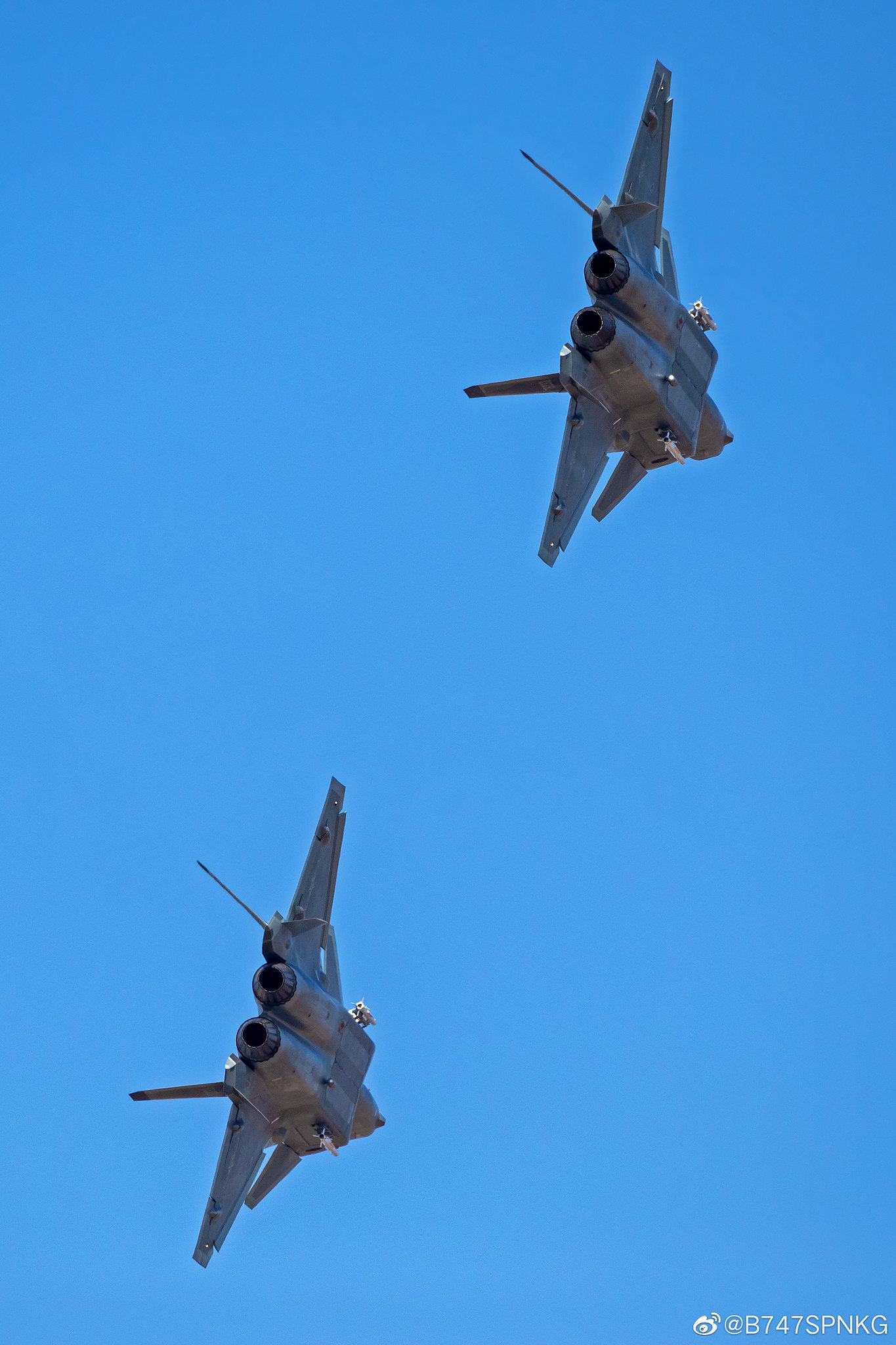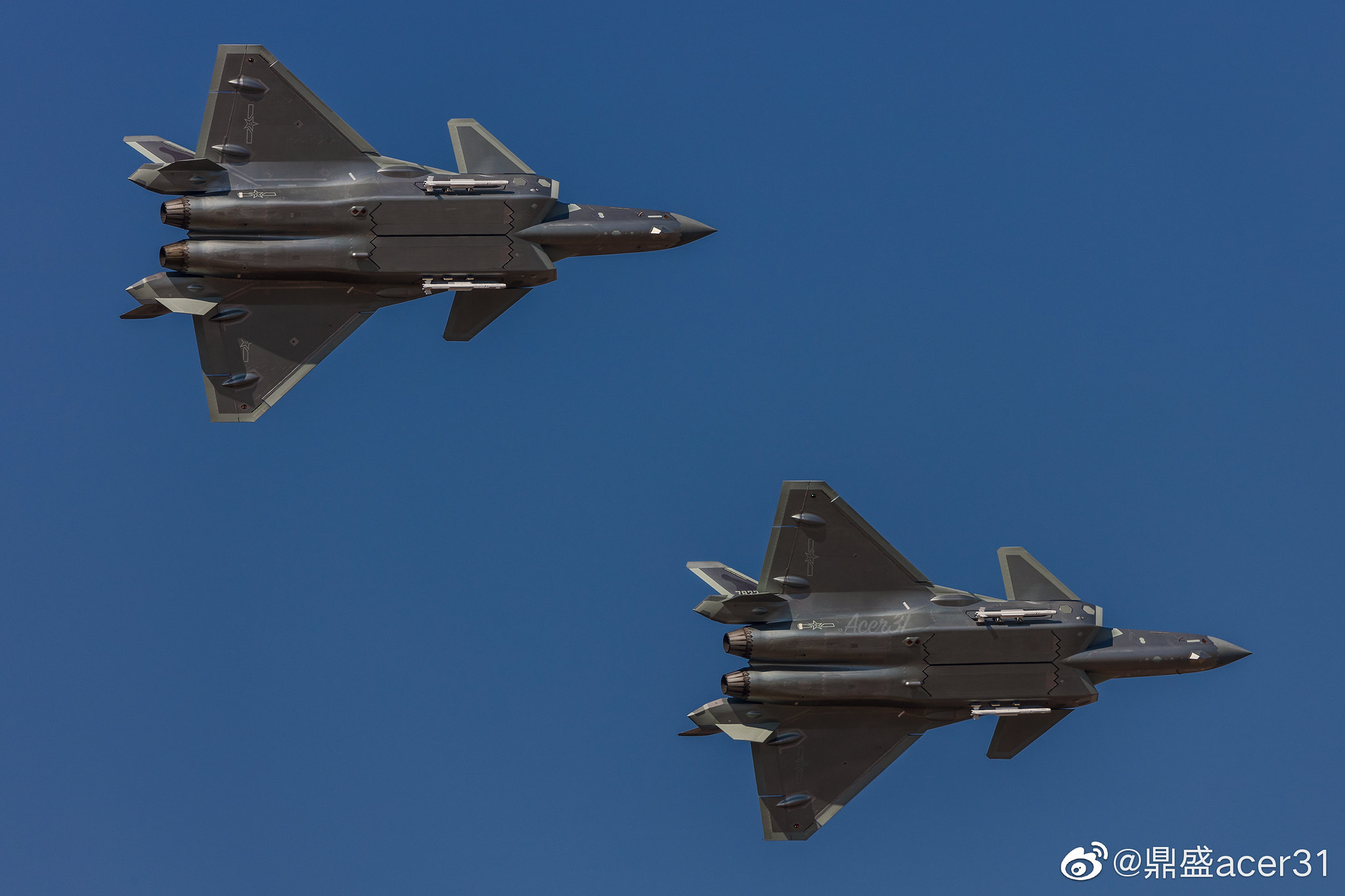You are using an out of date browser. It may not display this or other websites correctly.
You should upgrade or use an alternative browser.
You should upgrade or use an alternative browser.
J-20 5th Gen Fighter Thread VI
- Thread starter siegecrossbow
- Start date
- Status
- Not open for further replies.
We probably should start talking about the WS-15's purported 197 kN thrust.
First of all, I want to point out the insanity of it. 197 kN on a 18,000 kg empty weight fighter gets you to roughly 1.6 T/W at 60% fuel.
I/e, at this type of T/W, ITR could be entirely replaced by STR in terms of the 9G limit at many flight regimes.
Which calls into question how credible such claims are. For instance, the WS-15's primary problem is currently reliability, i.e, the potential of the J-20 airframe is being limited by WS-10-type engines right now, and the sooner reliable WS-15 come online, the sooner the J-20 stops being limited by such. If the achieved thrust has been rising from 160 kN to 170 kN to 180kN, all of these thrust ratings are sufficient for the J-20 to be competitive as a fighter. Wouldn't the target of development NOT be getting the WS-15 to higher max thrust, but rather getting the WS-15 engine to be reliable enough to be installed?
Second, we should discuss what you actually do with 1.6 T/W.
Two options immediately spring to mind. First, you can switch to 2D TVC for greater rear stealth, but poorer maneuverability. That bleeds off about 17% of the thrust due to the shifting geometries of the exhaust. That is one option with the J-20; that you go back to about 1.3 T/W at dogfight weights but further increase stealth.
Second, you can just keep the thrust; i.e, by replacing ITR with STR, rippled missile fires are now a lot less dangerous because normally, the point of such ripple-firing is that the first missile forces you to bleed energy, and the second missile actually does the hit. By replacing ITR with STR, the ripple fire technique stops working and ripple fire stops increasing the effective range of air-to-air missiles.
First of all, I want to point out the insanity of it. 197 kN on a 18,000 kg empty weight fighter gets you to roughly 1.6 T/W at 60% fuel.
I/e, at this type of T/W, ITR could be entirely replaced by STR in terms of the 9G limit at many flight regimes.
Which calls into question how credible such claims are. For instance, the WS-15's primary problem is currently reliability, i.e, the potential of the J-20 airframe is being limited by WS-10-type engines right now, and the sooner reliable WS-15 come online, the sooner the J-20 stops being limited by such. If the achieved thrust has been rising from 160 kN to 170 kN to 180kN, all of these thrust ratings are sufficient for the J-20 to be competitive as a fighter. Wouldn't the target of development NOT be getting the WS-15 to higher max thrust, but rather getting the WS-15 engine to be reliable enough to be installed?
Second, we should discuss what you actually do with 1.6 T/W.
Two options immediately spring to mind. First, you can switch to 2D TVC for greater rear stealth, but poorer maneuverability. That bleeds off about 17% of the thrust due to the shifting geometries of the exhaust. That is one option with the J-20; that you go back to about 1.3 T/W at dogfight weights but further increase stealth.
Second, you can just keep the thrust; i.e, by replacing ITR with STR, rippled missile fires are now a lot less dangerous because normally, the point of such ripple-firing is that the first missile forces you to bleed energy, and the second missile actually does the hit. By replacing ITR with STR, the ripple fire technique stops working and ripple fire stops increasing the effective range of air-to-air missiles.
We probably should start talking about the WS-15's purported 197 kN thrust.
First of all, I want to point out the insanity of it. 197 kN on a 18,000 kg empty weight fighter gets you to roughly 1.6 T/W at 60% fuel.
180 kN was the declared target for WS-15 development. It is possible that 197 kN was achieved on a bench test - that doesn't mean that would be the in-service rating. Assuming China wants a reasonable engine life, for instance.
Also bench tests by their nature use optimised bell-mouth intakes which give best possible airflow to the engine, and the engine when installed behind a real intake inside a plane will never match that.
180 kN was the declared target for WS-15 development. It is possible that 197 kN was achieved on a bench test - that doesn't mean that would be the in-service rating. Assuming China wants a reasonable engine life, for instance.
Installed Thrust isn't the same as Bench Test thrust, and it gets pretty wonky when the manufacturers are trying to export and have the opportunity to fudge the figures to better sell their aircraft. See the Al-31 installed thrust on the Su-27 vs bench test Al-31.
So I guess that's another possibility, instead of the 197kN rumors just being garbage; i.e, you get roughly 185 or so installed kN but bench test thrust is around 197 kN.
The idea of engining a 18000-22000 kg aircraft with 2 180 kN engines is a bit weird, however. It's very American, insofar as American aircraft design has always been able to depend on really absurd engines. Everyone else is stuck running to aerodynamics to compensate for inferior engines. If we assume 29000 kg at 60% fuel and with missiles (Trident has a high weight estimate for the J-20, the latest "optimistic" rumors are selling 17500 kg, working off the F-22 gets you roughly 18,000 kg if you assume the J-20 has lighter 3D titanium), you get about 1.27 T/W in a dogfight scenario at max range. Going down lower to 25000 kg (claimed Su-57 loaded weight is 25500 kg), you get 1.46 T/W.
Part of the engine-watching part of PLAAF watching works like this.
Most people floated a 132 kN WS-10A/B for quite some time. maya, who was apparently a Pakistani following Chinese aviation, gave us figures of 110 kN for the WS-10 that most people just ignored.
Later on, we got a leak that the WS-10A/B installed on the J-11 had a major problem with reliability and would go into compressor stalls if run at 132 kN. What happened instead was that the engine was equipped with a limiter that decreased afterburner thrust to 110 kN for normal operations, and that the limiter could be bypassed for emergency power if needed.
The Russians think the WS-15 is a 160 kN engine. Some Chinese sources claimed it was a 170-180 kN engine, and now we have this weird 197 kN claim.
Installed thrust is also a function of air being fed into the engine. Usually, as the plane is about to take off, installed thrust of a mach 2 class plane is some 20% (give or take) less than the uninstalled thrust at sea level (which all the publicized figures by manufacturers always refer to). As the plane goes faster, the installed thrust may increase. But also as the plane goes higher, the installed thrust will inevitably decrease. Of course, it's pretty much similar for all planes of similar class.
- Status
- Not open for further replies.


